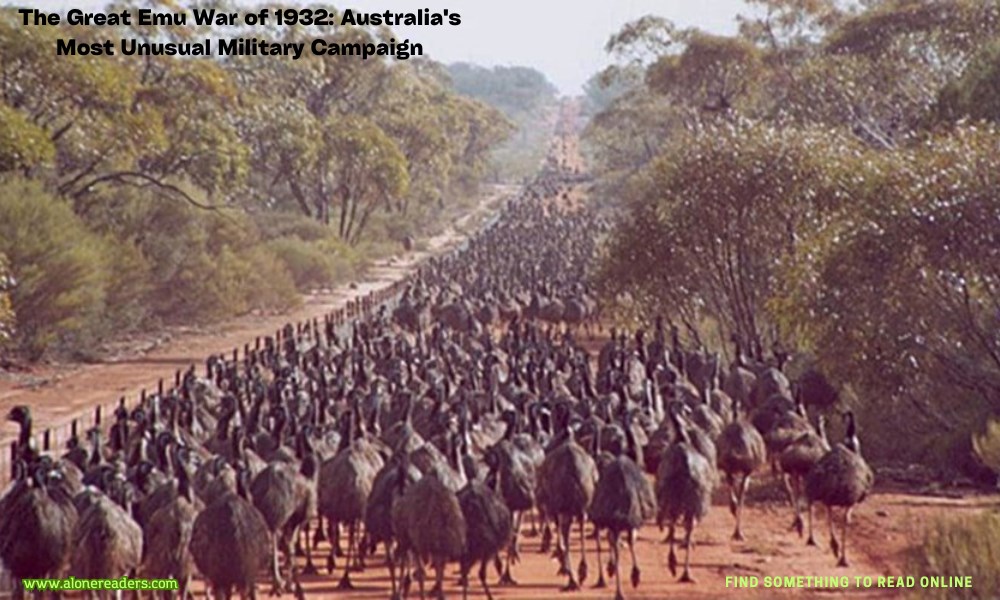
In 1932, the vast, arid expanses of Western Australia became the unlikely battleground for one of the most peculiar conflicts in military history—the Great Emu War. This unusual confrontation did not involve enemy states, nor was it triggered by political disputes. Instead, it was a large-scale nuisance management operation carried out by the Australian military against emus, a native flightless bird species that had begun to wreak havoc on the agricultural regions of the Campion district.
The background of this conflict traces back to the aftermath of World War I. During the war, the Australian government had encouraged discharged soldiers to take up farming in Western Australia, offering them land as part of a soldier settlement scheme. These ex-servicemen, many of whom lacked farming experience, were promised a new start but faced numerous challenges, not least of which was the Great Depression that caused wheat prices to plummet. The situation worsened in late 1932 when a flock of approximately 20,000 emus, migrating after their breeding season, invaded the farmlands, attracted by the abundant crops.
The emus, standing as tall as six feet and capable of running at speeds up to 50 kilometers per hour, proved to be formidable adversaries. They consumed and spoiled the crops and left large swathes of farmland barren with their sturdy legs, which were well suited for high-speed travel and not so subtly trampling crop fields. Desperate farmers, struggling to fence the birds out and protect their livelihoods, appealed to the government for assistance.
In response, the Minister of Defence, Sir George Pearce, decided that military intervention was the most efficient solution to what had quickly escalated into an agricultural crisis. In a decision that now seems almost comical in its gravitas, Pearce dispatched soldiers armed with Lewis guns—a type of light machine gun used extensively during WWI—and 10,000 rounds of ammunition. The 'war' was to be led by Major G.P.W. Meredith of the Seventh Heavy Battery of the Royal Australian Artillery, accompanied by a small contingent of soldiers.
November 1932 marked the beginning of the operation. However, the soldiers quickly discovered that the emus were remarkably resilient and difficult to target. Despite the military’s firepower, the birds' astonishing agility and unpredictable running patterns made them elusive targets. The first attempts to curb the population saw minimal success, with reports stating that only a few dozen birds were killed.
Frustration mounted as the emus continued to elude the soldiers' efforts. Media coverage of the event began to turn humorous, portraying the military campaign as a farcical battle against nature. Cartoons and editorials mocked the situation, and the soldiers themselves couldn’t help but be amused and bewildered by the resilience of their avian adversaries.
By December, it was clear that the operation was a failure. Major Meredith’s reports from the front lines depicted scenes straight out of a slapstick comedy, with emus scattering in all directions as soon as the guns were fired. His official report noted that his men had suffered no casualties, humorously adding that the emus could face machine guns with the invulnerability of tanks. He commented on the striking maneuverability of the emus, suggesting that if the birds could be recruited into the military, they would make excellent infantry soldiers.
The government withdrew the military personnel in December 1932 after approximately 2,500 rounds of ammunition had been fired and the number of birds killed was woefully insufficient to have any real impact. The "Emu War" ended in a victory for the emus, prompting reflection on human-animal conflicts and the challenges of managing nature.
In the aftermath, the farmers continued to battle the emus on their own, eventually turning to more effective methods such as building exclusion fencing and employing bounty hunters. The Great Emu War, though initially a source of mockery and amusement, highlighted the complexities and unpredictable nature of managing environmental and wildlife issues.
The Great Emu War remains a curious footnote in Australian history, often cited as an example of man's folly and the unpredictability of nature. It serves as a humorous yet poignant reminder of the challenges faced by Australia's agricultural community and the lengths to which humans will go to protect their economic interests, even if it means declaring war on wildlife.